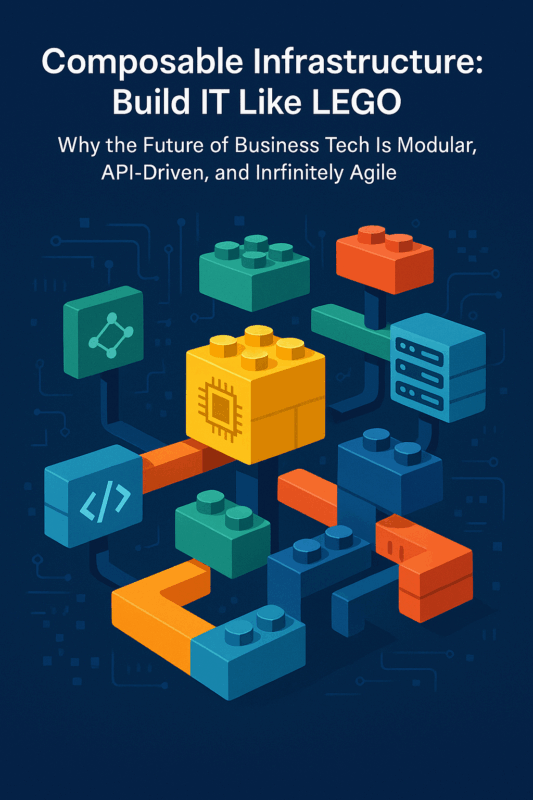Why the Future of Business Tech Is Modular, API-Driven, and Infinitely Agile
Remember when building IT meant pouring a concrete foundation, wiring everything up, and praying you’d guessed the right specs for the next five years? Yeah—nobody misses that. The future isn’t about locking yourself into massive, monolithic stacks. It’s about assembling the perfect solution from modular pieces—just like LEGO. Welcome to the age of composable infrastructure.
What Is Composable Infrastructure, Really?
Imagine IT as a box of LEGO bricks. Each brick is a function, a container, a microservice, or even a serverless API. Snap together what you need, change it when you want, break it apart and rebuild as your business evolves—without bringing the whole structure down.
-
Functions: Tiny, purpose-built code blocks (think AWS Lambda, Google Cloud Functions) that spin up on demand.
-
Containers: Lightweight, portable environments for apps and services (Docker, Kubernetes).
-
Microservices: Independent services with their own logic, easily upgraded or replaced.
-
Serverless APIs: Fully managed endpoints—just call and go.
These “bricks” are wired together by APIs, not hard-coded plumbing. The result? Maximum agility, minimum technical debt, and systems that evolve as fast as your business does.
Why Move Beyond Virtualization?
Virtualization was yesterday’s revolution: more efficient hardware, easier app isolation, better disaster recovery. But today, it’s the starting line, not the finish.
-
Virtual Machines are heavy and slow to change.
-
Composable pieces are lightweight, fast, and purpose-built.
-
Instead of “servers per app,” think “bricks per feature.”
Composable infrastructure lets you:
-
Deploy updates in minutes, not weeks.
-
Scale individual components, not entire systems.
-
Swap out failing or outdated bricks without collapsing your castle.
The Business Case: Flexibility = Survival
Tech moves fast. Your business moves faster (or it doesn’t move at all). Composable infrastructure means you can:
-
Prototype rapidly: Snap together new services without waiting on legacy upgrades.
-
Pivot instantly: Swap out technologies when market demands shift.
-
Pay for what you use: Serverless and containerized pieces scale up and down with demand.
-
Reduce risk: Isolate failures to single components, not entire stacks.
Bottom line? You get “future-proof” architecture without the usual sticker shock.
How Do You Start Building?
You don’t need to bulldoze your entire IT estate. Start small:
-
Identify a function or service that’s a good candidate—something self-contained but valuable.
-
Containerize it (Docker is your friend here).
-
Wrap it in an API or expose it as a serverless function.
-
Iterate. Add another. Plug in a microservice. Test, improve, repeat.
Over time, your stack looks less like a skyscraper and more like a living, breathing LEGO city—always under construction, but never brittle.
Real Talk: How Our Platform Fits In
At Subdomain Systems, we designed Mergent (our managed virtualization platform) and our AI substrate to plug right into this composable model. Need to spin up a new analytics engine, drop in an AI-powered insight tool, or bolt on new business logic? It’s just another brick.
-
API-first: Everything’s modular, everything connects via APIs.
-
AI-augmented: Smarter orchestration, automatic scaling, built-in insight.
-
Zero lock-in: Use only what you need—swap out or extend anytime.
We built it this way because we’re tired of seeing businesses trapped in tech that can’t flex. It’s time to build systems as creative as your business ambitions.
Final Word: Build Bold. Build Modular.
Composable infrastructure isn’t just a buzzword—it’s how smart companies stay nimble, relevant, and unstoppable. Whether you’re just starting to break out of your monolith or you’re ready to build a digital empire, remember: the next generation of IT is snap-together, not set-in-stone.
Ready to start building? Grab your bricks. Let’s see what you can create.



